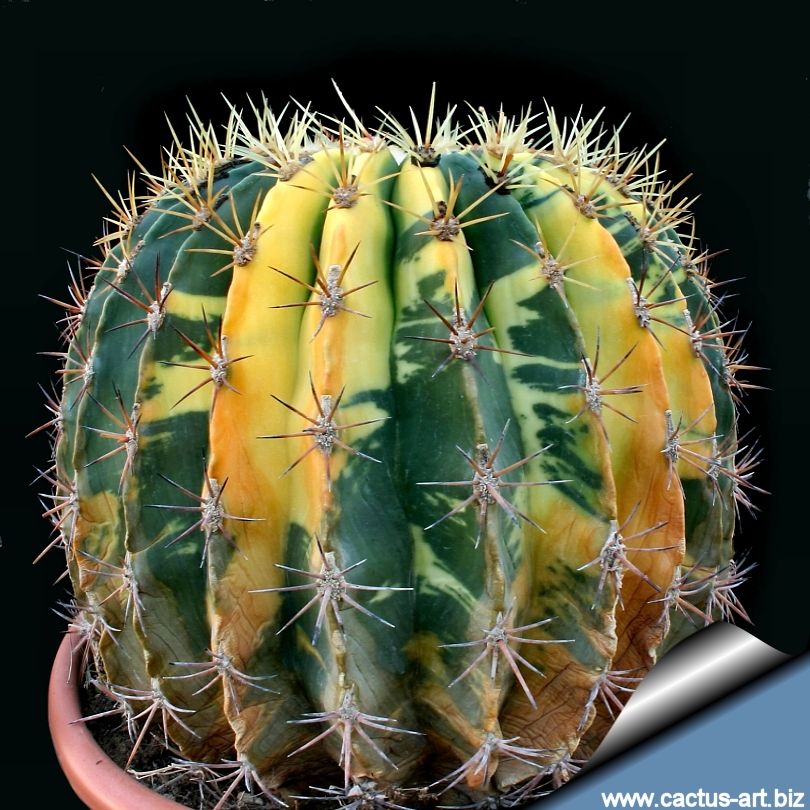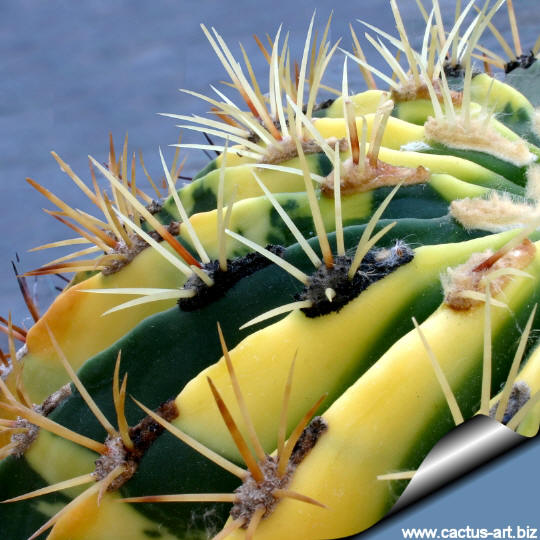|
|
|

Solitary plant might grows up to 1 m tall, 70 cm in
diameter
|
|
Variegated Ferocactus can be found (although not common) in
cultivation and some of these variegated plants have a place in most
collections. All variegates are
mutants. Something has gone wrong with the cellular structure of the
growth tip (apical
meristem) of the plant. As a result of this mutation,
chlorophyll is missing from some or all layers of the plant
epidermis. The odd variegate appears in many seedling batches in a
small percentage and are generally separated from normal plants.
Variegated plants grow slower and are generally smaller than
non-variegates of the same species. Coloured areas are also generally
weaker, and more
susceptible to
fungus,
sunburn and other defects. A large well grown variegate Ferocactus
is truly an achievement. These are harder to grow well than they appear.
Sun exposition: In the
summer it is best to avoid direct sun during the hottest hours of
the day (but benefits of morning sun, that help to produce strong and
colourful spines), in case of cultivation in
full sun it is best to plant with the variegated spot facing
northeast, so it gets the least amount of direct sunlight as possible.
|
|
Advertising
|
|
|
|
Family:
Cactaceae (Cactus
Family)
|
|
Scientific name:
Ferocactus hystrix (DC)
Lindsay forma variegata
Origin:
Garden origin (Nursery
produced cultivar)
Conservation status: Listed in
CITES appendix 2.
|
Synonyms:
- Echinocactus melocactiformis
- Ferocactus melocactiformis
- Bisnaga electracantha
- Bisnaga histrix
- Echinocactus histrix
- Echinocactus electracanthus
|
|
|
|

Photo of conspecific taxa, varieties, forms and
cultivars of Lobivia (Echinopsis) pentlandii .
of
plants belonging to the Lobivia...
complex
(This
Taxon
has lots of synonyms
(
like many other cacti) whit several controversial varieties and subspecies
and comprises a multitude of different forms, but where each form
is linked to others by populations of plants with intermediate
characteristics):

 |
|